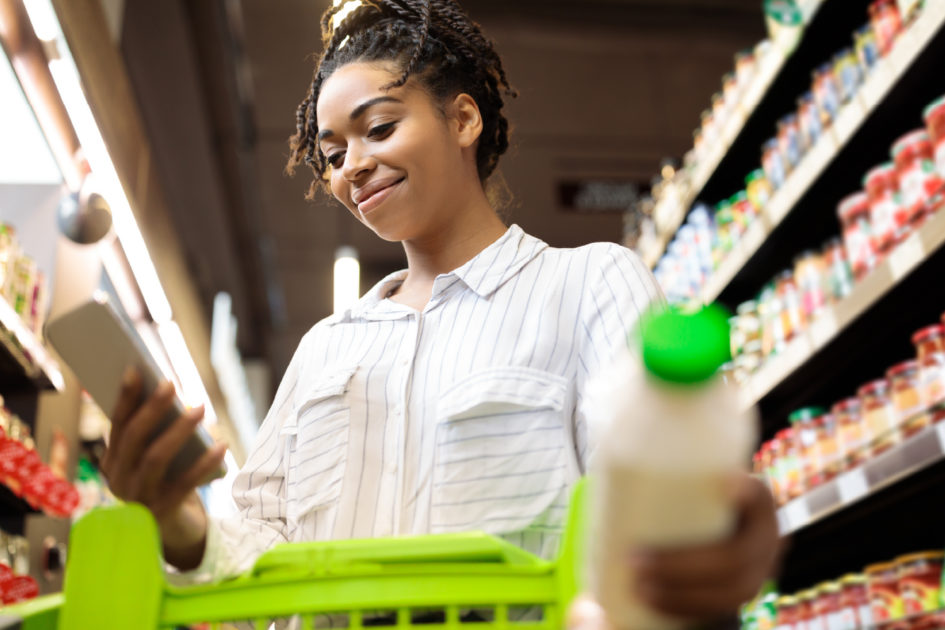How Grocery Brands Can Measure Their Customer Experience in 2025
By listening to their customers and measuring customer service standards, grocery brands can stay ahead of the curve and deliver what their customers need and want most—especially as consumer expectations and trends evolve. To be successful in measuring and administering change, keep these tips in mind for measuring service levels across your grocery locations.

Measure Across All Grocery Customer Service Touchpoints
It is vital for grocery brands to measure customer experience across all touchpoints as customer expectations rapidly evolve: online, in-app, on the phone, or in-store. Mystery Shopping, for example, can effectively evaluate each of these key channels and interactions, which directly impacts and elevates customer satisfaction.
Grocery chains require specific service standards to drive brand loyalty, and these standards should continually be measured to ensure customer retention:
- Stock levels being kept at 90% or above for all items
- Greeting customers within 20 seconds of arrival at service counters, even non-verbally if a line of customers is present
- Walking customers to products they ask about, rather than pointing or giving verbal directions
- Clean shelves and floors, free of water and debris at all times
- Organized and appealing displays with clear pricing
- Greeting and welcoming every customer who stands within 10 feet of an associate, even if the customer hasn’t asked for assistance
- Ensuring a customer found all items needed, even if that means sending an associate to get something the customer wasn’t able to find before checkout transaction completes
Even modest amounts of time without measurement have resulted in service impacts to customers that can take months for the grocery chain to recover from in customer loyalty, so grocery brands must maintain a consistent focus to protect market share and defend their stores from customer attrition.
Read more: Ideal Goals of a Mystery Shopping Program

Choose and Prioritize Your Measurement Strategy
Grocery chains should prioritize their measurement strategy based on their organizational goals for customer experience, and any feedback gathered from customers through communications with their Customer Care team. Ideally, most brands will focus on a holistic approach to customer experience measurement by administering a Mystery Shopping program and a Customer Satisfaction Survey program.
Mystery Shopping measures operational standards and brand performance. Whether in-store, online, on the phone, in-app, or beyond, you can uncover the behavioral and operational drivers of the customer experience that are ultimately responsible for improving customer satisfaction, loyalty, advocacy, and financial outcomes. As part of your mystery shopping program, administering Store Audits ensures compliance with operational and safety standards. This helps store leadership make updates as rapidly as possible to maximize safety and customer satisfaction.
Customer surveys are a vital and constant listening-post for customers and bring forth customer perceptions and trends. They capture highly valuable information that operationally-focused mystery shops may not have visibility to, as customer needs and experiences evolve quickly and vary across times of the day/week and geographical regions.
Operating both programs together and syncing the results regularly ensures that mystery shop assessments stay aligned with customer needs found in the survey results, improving customer satisfaction faster and building long-term loyalty to that grocer vs. competitors.
Read more: Strengthening Brand Experience in the Grocery Industry

Prioritize Which Service Improvements to Make
Improvement prioritization should be based on the overall scoring or impact of a service category or touchpoint. Service interactions that have a greater impact on customer satisfaction and loyalty are weighted heavier in order to offer focus and prioritization.
Mystery Shopping within the grocery industry is compartmentalized by department or service channel, with each store shopped three to eight times per month, depending on store size and sales volume. Shoppers are typically visiting three to five departments and interacting with four to five associates during a single visit in order to capture a true customer experience.
In the end, whether the service strengths or weaknesses are in Produce, Deli, Customer Service, Checkout, or any of the many other customer touchpoints, mystery shopping helps you highlight where to start making improvements first.
Read more: 4 Tips to Maximize Mystery Shopping Results Across Your Organization
Cascade Feedback Through Your Grocery Store Locations
Customers want to be heard, whether the experience is excellent or poor. By offering a survey tool to capture feedback at every customer touchpoint, the brand is communicating that they care and want to understand their customers’ needs and wants.
Grocery chains typically cascade customer experience data by hierarchy all the way down to the store manager and department manager. This enables transparency throughout the organization and drives accountability. Some brands choose to incentivize managers based on positive feedback or mystery shopping scores to engage that next-level performance and ensure that field management actively uses the program feedback in the daily operation and maintenance of their stores.

What to Look for In a Grocery Mystery Shopping Program
Sure, you might know you want to implement a mystery shopping program. Perhaps you even want to implement both mystery shopping and customer surveys as a holistic approach. But it can be difficult to know where to start—or who to work with.
If your organization is already looking into implementing a mystery shopper program, there are probably several different vendor options being explored by your team. While completing this due diligence is important, it can be challenging to know the right questions to ask when submitting a request for proposal (RFP). Asking the right questions can give your brand leadership more confidence that they are working with the right vendor so that you can then provide an industry-leading customer experience.
Here are the questions you should ask in your mystery shopping RFP.
Ultimately, grocery chains should look for an experienced vendor that understands the nuances of the grocery industry and brings forth recommendations for the design and execution of the customer experience program. In addition, reporting by hierarchy and service department is essential when delivering action plans to store managers and department managers. And the reports should be streamlined, yet actionable.
We’ve been administering proven mystery shopping programs and customer survey programs for over 30 years for companies like Starbucks, Krispy Kreme, and Under Armour (prefer to use grocery chain names here, such as Whole Foods, Giant Eagle, Meijer, and H-E-B). We can help you get game-changing insights for your grocery chain.
Read about how we helped Whole Foods gain actionable visibility to customer experiences in each department as well as operational strengths and weaknesses at the store level.
Grocery Store Customer Experience
How do brands measure the grocery customer experience in 2024?
Brands measure the grocery customer experience by utilizing advanced analytics, customer feedback tools, and real-time data to understand shopping behaviors, identify pain points, and optimize both in-store and online experiences.
Why is real-time data important for measuring customer experience?
Real-time data provides immediate insights into customer interactions, enabling brands to quickly address issues and improve the shopping experience.
What tools are used to capture customer feedback?
Tools include surveys, mobile apps, and digital touchpoints that gather customer opinions and preferences.





